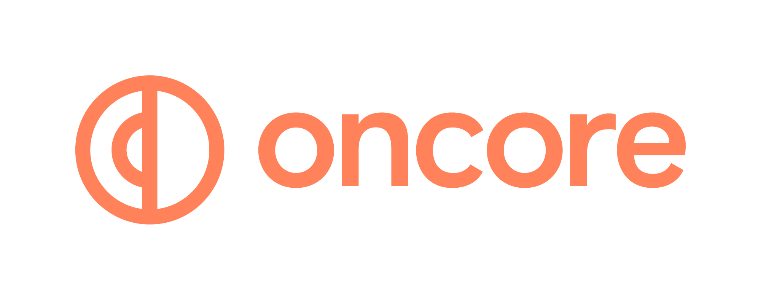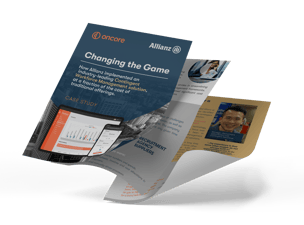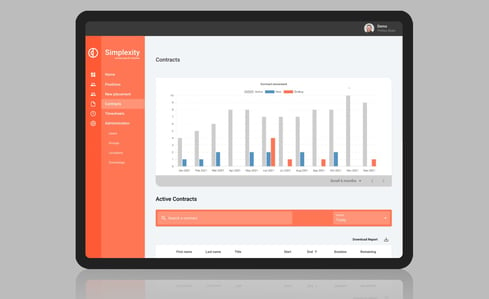Australia’s current job market's fluctuations, rapid technological advancements, and pressing demand for immediate impact have made adaptability the true cornerstone of business success today.
Traditional workforce structures are undergoing dramatic change to meet the challenges of this new fast-paced global world. The spotlight is now firmly on skills-based hiring and workforce management, championing agility and responsiveness as the keys to success.
The outdated approach of relying solely on traditional job roles and permanent hires often results in significant skills gaps and generic training programs. This approach tends to focus more on filling job roles than acquiring the necessary skills a business needs to grow. In response to the resulting persistent skills shortages, organisations are recalibrating their workforce planning and management programs to prioritise skills in their talent search.
Embracing Evolution
Recent research, including a study by renowned career expert Dan Schawbel, highlights a 63% surge in skills-based hiring over the past year. Employers are recognising the value of prioritising skills and knowledge over the more traditional metrics like academic qualifications and/or work experience. This shift is crucial in the face of a changing work landscape, where adaptability and the ability to meet evolving challenges are so critical.
As more companies are starting to shift towards skills-based hiring, more professionals are also starting to take ownership of their own upskilling opportunities, and so recruiters are needing to embrace this and adjust their hiring strategies to tap into this new skills currency.
A New Era of Prioritisation
A study reveals that 79% of employers now consider skills assessments to be as, if not more, important than other hiring criteria. The rationale behind this shift lies in the demand for job-ready candidates. Employers seek individuals who can seamlessly integrate into roles, making an immediate impact without extensive training. This not only streamlines the recruitment process but also proves to be much more cost-effective.
In a sign of the times, Linkedin has introduced a Skills Assessment tool to help recruiters and hiring managers easily screen for different technical, business and design skills. The assessment is available for over 80 different skills, and members who complete the test in the top 30% will receive a skills badge on their profile. The badge validates their skill and makes them more discoverable to opportunities.
Diversifying Perspectives
Skills-based hiring opens the door to a much broader pool of candidates. The Burning Glass Institute found that the number of jobs requiring a university degree dropped from 51% in 2017 to 41% in 2022. This inclusivity fosters a diverse workplace where individuals from various backgrounds contribute their own unique skills and perspectives. Notable global companies, including IBM, Deloitte, Amazon, and Accenture, have already embraced this approach. Read more about the benefits Diversity and Inclusion can bring to your business here
Unveiling the Benefits
The advantages of skills-based hiring are compelling. LinkedIn reports that 60% of global leaders believe it will be the primary method of recruitment in the next five years. According to ManpowerGroup, 77% of employers using skills-based hiring report a higher success rate in finding the right candidate. Additionally, this approach can lead to reduced turnover rates (as reported by 78% of employers) and improved diversity, as highlighted in a Deloitte report.
Assessing the current skills
To start on the journey of skills-based workforce management, companies must first comprehensively assess their existing skill sets. To initiate this process, companies need to:
- Create a comprehensive map of the skills that are essential across the various functions and teams. By mapping this out, organisations can gain valuable insights into their overall strengths and weaknesses.
- Recognise instances where skill requirements overlap, as many skill sets can be versatile and applicable across different departments.
- Evaluate the immediate need for each skill set, considering its capacity and required proficiency level. This assessment will guide decisions on whether to cultivate these skills internally or bring in external expertise.
- Align the identified skills with ongoing and upcoming projects, allowing for a strategic forecast of long-term skill requirements for the business.
Identifying the Skill gaps
Recognising skill gaps is pivotal in creating a workforce that can quickly adapt to changing demands. Companies that proactively identify and address these gaps are better equipped to stay ahead in the competitive market. Skill gaps, when left unaddressed, can hinder productivity and innovation. The strategic identification of these gaps forms the foundation for a more agile and adaptable workforce.
The Strategic Role of Contractors
Understanding the Need for Contractors
Enter the strategic role of contractors. These external specialists play a crucial part in addressing specific skill gaps. Their flexibility allows companies to swiftly onboard expertise for short-term projects or immediate needs. Contractors bring a fresh perspective and a wealth of experience, injecting vitality into projects and providing solutions that might not be readily available within the organisation.
Plugging Skill Gaps with Contractors
The use of contractors becomes particularly evident in scenarios where specific skill sets are required for short-term, high-impact projects. The agility and efficiency that contractors bring to the table enable companies to navigate through project complexities seamlessly. This approach not only ensures that skill gaps are promptly addressed but also optimises resource allocation for maximum productivity.
Forecasting Future Needs
Projecting Business Needs
Looking ahead, companies need to project their future needs by aligning skill requirements with business objectives. Forecasting upcoming projects and programs allows organisations to strategically plan their workforce, ensuring that the right skills are available when and where they are needed. This forward-thinking approach positions companies to respond effectively to evolving business landscapes.
Long-Term vs. Short-Term Skill Requirements
Drawing a distinction between skills needed for immediate projects and those required in the long term is crucial. While some skills may be project-specific, others may form the backbone of long-term strategies. Companies must navigate the balance between developing in-house talent and leveraging the agility of contractors for specific, short-term objectives.
Future-proofing Workforce Strategies
The momentum toward skills-based hiring is unstoppable. As the job market continues to evolve, companies must adapt to remain competitive. The focus on skills not only addresses immediate talent shortages but also lays the foundation for a workforce that can navigate future challenges.
The era of skills-based hiring is upon us, driven by the need for adaptable, skilled professionals. HR and Talent Leaders navigating the complex job of workforce planning should see skills-based hiring as a strategic ally, and be more flexible about the worker types they bring into their organisation, offering a pathway to a more efficient, diverse, agile and resilient workforce.
—----------------------------------------------------------------
We would love to share with you your experiences with skills-based hiring and workforce management? How has your organisation embraced agility in its workforce planning?
If you would like to explore the benefits of skills-based hiring further, and understand how Oncore can help you with your workforce planning and management then get in touch with us here.












_11zon%20(1).jpg?width=302&height=124&name=linkedin-sales-solutions-vqWWOnA6--M-unsplash%20(2)_11zon%20(1).jpg)






